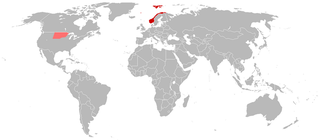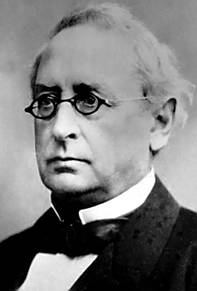
Impeachment is the process by which a legislative body levels charges against a government official. It does not mean removal from office; it is only a statement of charges, akin to an indictment in criminal law. Once an individual is impeached, he or she must then face the possibility of conviction by a legislative vote, which judgment entails removal from office.
The politics of Norway take place in the framework of a parliamentary representative democratic constitutional monarchy. Executive power is exercised by the Council of State, the cabinet, led by the Prime Minister of Norway. Legislative power is vested in both the government and the legislature, the Storting, elected within a multi-party system. The judiciary is independent of the executive branch and the legislature.
The Constitution of Norway was first adopted on 16 May and subsequently signed and dated on 17 May 1814 by the Norwegian Constituent Assembly at Eidsvoll. It was at the time considered to be one of the most liberal or radically democratic constitutions in the world, and it is today the second oldest single-document national constitution in Europe after the Constitution of Poland and second oldest in the world still in continuous force after the United States Constitution, as the Polish 3 May Constitution survived for less than 2 years. 17 May is the National Day of Norway.

The President of India is the ceremonial head of state of India and the commander-in-chief of the Indian Armed Forces.

The Storting is the supreme legislature of Norway, established in 1814 by the Constitution of Norway. It is located in Oslo. The unicameral parliament has 169 members, and is elected every four years based on party-list proportional representation in nineteen plurinominal constituencies. A member of the Storting is known in Norwegian as a stortingsrepresentant, literally "Storting representative".
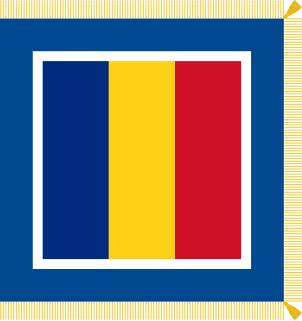
The President of Romania is the head of state of Romania. The President is directly elected by a two-round system for a five-year term. An individual may serve two terms. During his/her term in office, the President may not be a member of any political party.

The Government of India, often abbreviated as GoI, is the union government created by the constitution of India as the legislative, executive and judicial authority of the union of 29 states and seven union territories of a constitutionally democratic republic. It is located in New Delhi, the capital of India.

The Chief Justice of India (CJI) is the head of the judiciary of India and the Supreme Court of India. The CJI also heads their administrative functions.

The Constitution of Austria is the body of all constitutional law of the Republic of Austria on the federal level. It is split up over many different acts. Its centerpiece is the Federal Constitutional Law (Bundes-Verfassungsgesetz), which includes the most important federal constitutional provisions.

The Italian Parliament is the national parliament of the Italian Republic. The Parliament is the representative body of Italian citizens and is the successor to the Parliament of the Kingdom of Sardinia (1848–1861) and the Parliament of the Kingdom of Italy (1861–1946). It is a bicameral legislature with 945 elected members and a small number of unelected members (parlamentari). It is composed of the Chamber of Deputies, with 630 members (deputati) elected on a national basis, and the Senate of the Republic, with 315 members (senatori) elected on a regional basis, plus a small number of senators for life, either appointed or ex officio. The two houses are independent from one another and never meet jointly except under circumstances specified by the Constitution.

Under the Constitution of Finland, everyone is entitled to have their case heard by a court or an authority appropriately and without undue delay. This is achieved through the judicial system of Finland.
In Greece, the Supreme Special Court is provided for in the article 100 of the Constitution of Greece. It is not a permanent court and it sits only when a case belonging to its special competence arises. It is regarded as the supreme "constitutional" and "electoral" court of Greece. Its decisions are irrevocable and binding for all the courts, including the Supreme Courts. However, the Supreme Special Court does not have an hierarchical relation with the three Supreme Courts. It is not considered higher than these courts and it does not belong to any branch of the Greek justice system.
The Judicial system of Greece is the country's constitutionally established system of courts.
Impeachment in the Philippines is an expressed power of the Congress of the Philippines to formally charge a serving government official with an impeachable offense. After being impeached by the House of Representatives, the official is then tried in the Senate. If convicted, the official is either removed from office or censured.
The court of appeal is the second level of courts of justice in Norway, reviewing criminal and civil cases appealed from the district courts. There are six courts of appeal, each covering a jurisdiction and based in a city. Each court is led by a senior judge president (lagman) and several appellate judges (lagdommer). The courts are administrated by the Norwegian National Courts Administration. Decisions from civil and criminal matters, except the question of guilt, can be appealed from the courts of appeal to the Supreme Court.

Jon Gundersen Hol was a Norwegian engineer and activist. He is known for his pamphlet Rifleringen, published in February 1884, that resulted in his arrest for lèse majesté. In the pamphlet, he called for soldiers and civilians to arm themselves and encircle the Parliament of Norway Building, creating a "Ring of Rifles", should the need arise. The political situation in Norway at the time was unstable, with an ongoing impeachment case against the conservative government started by political liberals. King Oscar II of Sweden and Norway supported the conservative politicians, and Hol believed that a political and military counter-offensive was planned, hence the need for guarding the Parliament. The tensions between liberals and conservatives drew Hol into politics in the first place in 1880. Before this, he was an engineer by occupation and a writer, albeit apolitical. He increased his writing after 1880, and also involved himself in non-socialist trade unions, including the unsuccessful attempt of establishing a national trade union center in Kristiania.

The United Kingdom does not have a codified constitution such as other countries tend to have. Instead of such a constitution, certain documents stand to serve as replacements in lieu of one. These texts and their provisions therein are considered to be constitutional, such that the "constitution of the United Kingdom" or "British constitution" may refer to a number of historical and momentous laws and principles like the Acts of Union 1707 and the Acts of Union 1800 which formulate the country's body politic. Thus the term "UK constitution" is sometimes said to refer to an "unwritten" or uncodified constitution. The British constitution primarily draws from four sources: statute law, common law, parliamentary conventions, and works of authority. Similar to a constitutional document, it also concerns both the relationship between the individual and the state and the functioning of the legislature, the executive, and the judiciary.
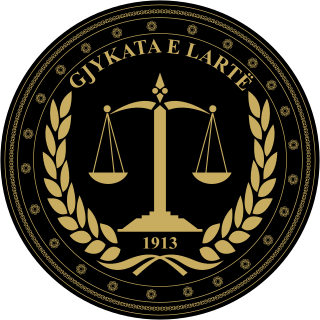
The Supreme Court of the Republic of Albania is the highest court of Albania and is the final court of appeal in the judicial system of Albania. It is composed of seventeen judges, the Chief Justice and sixteen Members.
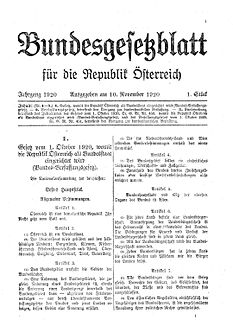
The Federal Constitutional Law is the centerpiece of the constitution of the Republic of Austria. The act defines Austria to be a democratic parliamentary republic with free multi-party elections and universal suffrage. It characterizes Austria as a federation (Bund) consisting of nine federal states (Bundesländer) but vests the supposed states it creates with comparatively little autonomy.

The Supreme Court of the Dominican Republic is the highest court existing in the Republic and is, therefore, the head of the judiciary in the country.

